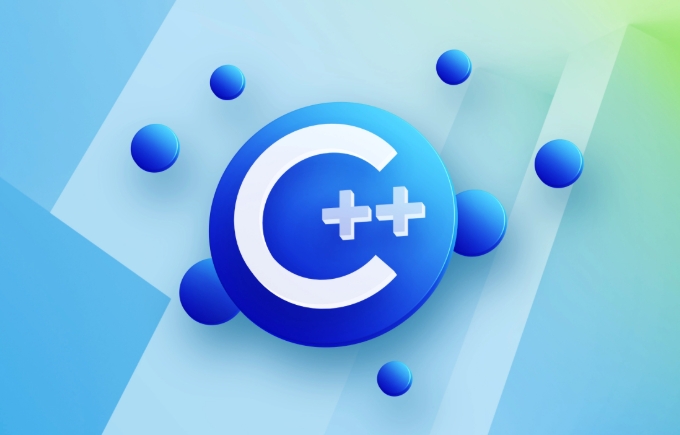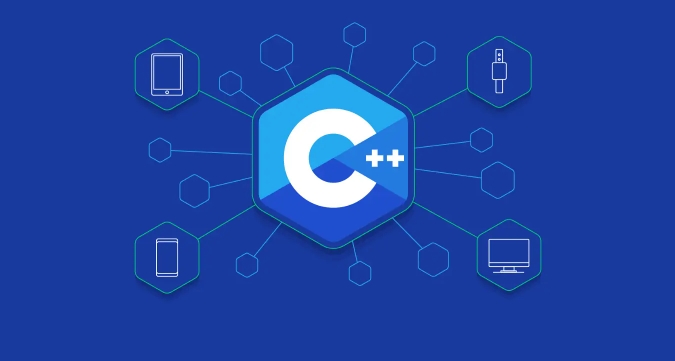What is the volatile keyword in C ?
volatile tells the compiler that the value of the variable may change at any time, preventing the compiler from optimizing access. 1. Used for hardware registers, signal handlers, or shared variables between threads (but modern C recommends std::atomic). 2. Each access is directly read and write memory instead of cached to registers. 3. It does not provide atomicity or thread safety, and only ensures that the compiler does not optimize read and write. 4. Constantly, the two are sometimes used in combination to represent read-only but externally modifyable variables. 5. It cannot replace mutexes or atomic operations, and excessive use will affect performance.

The volatile keyword in C is used to tell the compiler that a variable's value can change at any time — even outside the current code flow. This means the compiler should not optimize accesses to that variable, because doing so could lead to incorrect behavior.

You typically see volatile used when dealing with hardware registers, signal handlers, or variables shared between threads (though for the latter, modern C offers better tools like std::atomic ).

What does volatile do exactly?
When you declare a variable as volatile , the compiler assumes that any read or write to that variable must actually happen — it can't be cached in a register or reordered for optimization purposes. So every access goes directly to memory.
For example:

volatile int status_flag;
Here, every time status_flag is accessed, the program will read its actual value from memory instead of assuming what it might be based on previous operations.
This helps prevent bugs in scenarios like:
- Memory-mapped I/O where hardware changes values behind the scenes.
- Variables modified by an interrupt service routine.
- Shared memory in certain low-level concurrency situations (though again, prefer
std::atomicthese days).
When should you use volatile?
Use volatile when working with:
- Hardware registers – such as those in embedded systems where memory-mapped devices update values independently.
- Memory shared with other threads or processes without using synchronization primitives — though this is tricky and often not sufficient on its own.
- Signal handlers – if a variable is changed inside a signal handler and used elsewhere in the program.
Keep in mind: volatile does not provide atomicity or thread safety. It only ensures that the compiler doesn't optimize away reads and writes.
So if you're writing multithreaded code, prefer types like std::atomic<T> over volatile .
How is volatile different from const?
While const tells the compiler a variable shouldn't change, volatile says the opposite — that it might change at any time. Sometimes you'll even see both together:
volatile const int sensor_value;
This would be used for something like a read-only hardware register whose value changes on its own.
Also, note that const volatile combinations are more common in device drivers or real-time systems where a value is meant to be read-only from the program's perspective but still subject to external updates.
Some gotchas with volatile
- It doesn't replace mutexes or atomics. If two threads modify a
volatilevariable without synchronization, you still get a race condition. - It doesn't stop all optimizations. It prevents caching in registers and some reorderings, but not all concurrency-related issues.
- Misuse can hurt performance. Since the compiler can't optimize access to
volatilevariables, excessive use may slow your code down unnecessarily.
So basically, use volatile when you need to interact with memory that can be updated asynchronously — but don't expect it to handle synchronization or thread safety for you.
Basically that's it.
The above is the detailed content of What is the volatile keyword in C ?. For more information, please follow other related articles on the PHP Chinese website!

Hot AI Tools

Undress AI Tool
Undress images for free

Undresser.AI Undress
AI-powered app for creating realistic nude photos

AI Clothes Remover
Online AI tool for removing clothes from photos.

Clothoff.io
AI clothes remover

Video Face Swap
Swap faces in any video effortlessly with our completely free AI face swap tool!

Hot Article

Hot Tools

Notepad++7.3.1
Easy-to-use and free code editor

SublimeText3 Chinese version
Chinese version, very easy to use

Zend Studio 13.0.1
Powerful PHP integrated development environment

Dreamweaver CS6
Visual web development tools

SublimeText3 Mac version
God-level code editing software (SublimeText3)
 How to fix missing MSVCP71.dll in your computer? There are only three methods required
Aug 14, 2025 pm 08:03 PM
How to fix missing MSVCP71.dll in your computer? There are only three methods required
Aug 14, 2025 pm 08:03 PM
The computer prompts "MsVCP71.dll is missing from the computer", which is usually because the system lacks critical running components, which causes the software to not load normally. This article will deeply analyze the functions of the file and the root cause of the error, and provide three efficient solutions to help you quickly restore the program to run. 1. What is MSVCP71.dll? MSVCP71.dll belongs to the core runtime library file of Microsoft VisualC 2003 and belongs to the dynamic link library (DLL) type. It is mainly used to support programs written in C to call standard functions, STL templates and basic data processing modules. Many applications and classic games developed in the early 2000s rely on this file to run. Once the file is missing or corrupted,
 C operator overloading example
Aug 15, 2025 am 10:18 AM
C operator overloading example
Aug 15, 2025 am 10:18 AM
Operator overloading in C allows new behaviors of standard operators to be assigned to custom types, 1. Return new objects through member function overloading; 2. Overload = Modify the current object and return reference; 3. Friend function overloading
 C vector of strings example
Aug 21, 2025 am 04:02 AM
C vector of strings example
Aug 21, 2025 am 04:02 AM
The basic usage of std::vector includes: 1. Declare vector; 2. Add elements with push_back(); 3. Initialize with initialization list; 4. Loop traversal with range for; 5. Access elements through index or back(); 6. Direct assignment of values to modify elements; 7. Delete the end elements with pop_back(); 8. Call size() to get the number of elements; it is recommended to use constauto& to avoid copying, pre-allocate reserve() to improve performance, and pay attention to checking that it is not empty before access. This data structure is an efficient and preferred way to handle string lists.
 C false sharing example
Aug 16, 2025 am 10:42 AM
C false sharing example
Aug 16, 2025 am 10:42 AM
Falsesharing occurs when multiple threads modify different variables in the same cache line, resulting in cache failure and performance degradation; 1. Use structure fill to make each variable exclusively occupy one cache line; 2. Use alignas or std::hardware_destructive_interference_size for memory alignment; 3. Use thread-local variables to finally merge the results, thereby avoiding pseudo-sharing and improving the performance of multi-threaded programs.
 How to write a simple TCP client/server in C
Aug 17, 2025 am 01:50 AM
How to write a simple TCP client/server in C
Aug 17, 2025 am 01:50 AM
The answer is that writing a simple TCP client and server requires the socket programming interface provided by the operating system. The server completes communication by creating sockets, binding addresses, listening to ports, accepting connections, and sending and receiving data. The client realizes interaction by creating sockets, connecting to servers, sending requests, and receiving responses. The sample code shows the basic implementation of using the Berkeley socket API on Linux or macOS, including the necessary header files, port settings, error handling and resource release. After compilation, run the server first and then run the client to achieve two-way communication. The Windows platform needs to initialize the Winsock library. This example is a blocking I/O model, suitable for learning basic socket programming.
 How to write a basic Makefile for a C project?
Aug 15, 2025 am 11:17 AM
How to write a basic Makefile for a C project?
Aug 15, 2025 am 11:17 AM
AbasicMakefileautomatesC compilationbydefiningruleswithtargets,dependencies,andcommands.2.KeycomponentsincludevariableslikeCXX,CXXFLAGS,TARGET,SRCS,andOBJStosimplifyconfiguration.3.Apatternrule(%.o:%.cpp)compilessourcefilesintoobjectfilesusing$
 How to link libraries in C
Aug 21, 2025 am 08:33 AM
How to link libraries in C
Aug 21, 2025 am 08:33 AM
To link libraries in C, you need to use -L to specify the library path when compiling, -l to specify the library name, and use -I to include the header file path to ensure that the static or dynamic library files exist and are named correctly. If necessary, embed the runtime library path through -Wl,-rpath, so that the compiler can find the declaration, the linker can find the implementation, and the program can be successfully built and run.
 How to configure IntelliSense for C in VSCode
Aug 16, 2025 am 09:46 AM
How to configure IntelliSense for C in VSCode
Aug 16, 2025 am 09:46 AM
To correctly configure IntelliSense for C in VSCode, first install Microsoft's C/C extension, then set the compiler path, include directories and C standards. You can manually configure the build information by editing c_cpp_properties.json or automatically obtain the build information using compile_commands.json. Finally, restart and verify that the IntelliSense function is working properly, ensuring that code completion, syntax highlighting and error detection are accurate.







